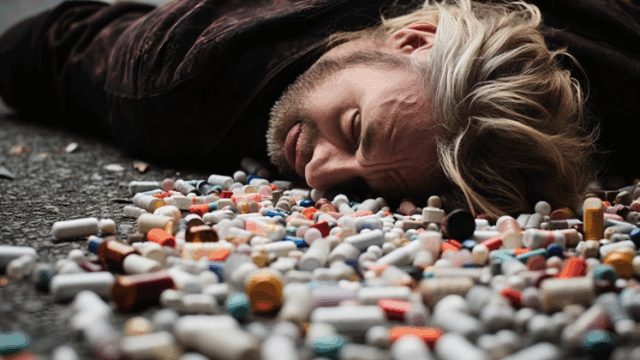Is RFK Jr. Making a Difference? Ask Big Pharma

Even before President Trump was sworn in, Robert F. Kennedy, Jr. had been trying to make a big difference in terms of America’s health care. As President Trump’s Health and Human Services secretary, he began with a big target – prescription pharmaceuticals.
However, until now, there has been no reliable matrix for determining if RFK Jr.’s efforts were actually making a difference, or if Big Pharma was conducting “business as usual.”
Until now.
I’ve worked in advertising for many years. In the most recent ten days, I have been carefully monitoring a whole collection of television commercials, especially late-night commercials on cable, where it’s both possible and affordable to run ads longer than the traditional 15, 30 or even 45-second lengths.
Earlier this year, I wrote a series of articles published in American Thinker about television ads, especially about those that don’t work – and why. I especially focused on Big Pharma ads, which seem to underwrite late-night programming, from news to entertainment shows.
However, these were anecdotal examples of bad ads, not a serious study of trends in advertising. I think it’s now time to use a more in-depth study of pharmaceutical ads, what they contain and what they mean. Best of all, you can do your own tests and draw your own conclusions. Here’s how:
- Look for Big Pharma ads that run longer than 60 seconds.
- Calculate the length of the patient warning – use your stopwatch to time how long these warnings last as part of the total ad.
- Make a judgment call – how clearly do these ads warn you of horrific side-effects, from blindness to death. If you clearly hear this kind of warning, try to remember if you’d ever clearly heard those kinds of warnings before.
- Finally, if ads seem to run longer, if the warnings seem to be dire, and if you feel “warned off,” ask yourself: “What could motivate Big Pharma to spend so much money trying to warn off clients?’
Let’s start with Jardiance, one of those anti-diabetes products that also have a near-magical ability to foster quick, reliable and presumably safe weight loss. Besides having an almost maddening theme song about the “little pill with a great big story to tell,” these ads started out last spring.
The theme songs were maddeningly frequent, and as mind-numbing as the 1963 one-hit wonder by the Trashman, the two-minute/22-second song, “Surfin’ Bird.” If you’re too young to remember, search it on YouTube, then listen to it a few times. I project that within five replays, you’ll either hate it or love it. You’ll also understand why I compare the Jardiance ads to Surfin’ Bird.
Note to those who might find 1963 way too old, if you like the Netflix program “Wednesday,” here’s the original Wednesday and her Addams Family members dancing to The Surfin’ Bird.
However, besides its visceral annoyance, Jardiance ads have changed dramatically. For years – decades, really – Big Pharma was required to include warnings on TV ads. Given this mandate, Big Pharma did everything they could to avoid making these warnings clear.
At first, they would buy two-page spreads in something like Golf Digest, then using 8-point typefaces, they would publish every warning possible, in type far too small for people to read, especially those of us with bifocals. Warnings were there if you needed them, but you had to work hard to see them. Of course, Golf Digest and other targeted magazines loved to carry these warning ads – nobody read them, but the advertisers paid the full rate for two-page spreads.
Eventually, the FDA figured this out, and suddenly the print ads no longer covered the T.V. ads. So ad agencies found people who could read really fast, but with soft voices that were still hard to comprehend. That was what I heard on Labor Day evening ads.
Two weeks later, I noticed that T.V. ads now included loudly-spoken warnings at a pace where anybody fluent in English could understand. Jardiance, for instance, now mentions things like “death” and “suicide” as counter-indications.
Since Labor Day, I’ve been sensing that Big Pharma’s ads on cable television have been growing longer, with more words that aren’t intended to be entertaining. Now they’re clearly informative.
Last summer, as I was critiquing ads on American Thinker, I noticed that a fairly big chunk of each ad talks about potential dangers, and the risks they described are easier to understand than they’d been earlier this year.
However, by Halloween, the ads were specifically longer still – as much as two minutes long.
At least half of these ads, perhaps more, were not only longer but more specific.
Instead of masking the voice-over reading of potential risks against a background of entertaining music, Jardiance and other product’s ads include from 45 seconds to a minute or more of an announcer reading a list of side-effects such as organ failure, cancer, and death. Jardiance and other pharmaceutical products reinforce this.
Since those ads are intended to sell products, and since product warnings can easily shut down sales – because who wants to risk fatalities just to lose a little weight – the logical conclusion is that Big Pharma is being pressured to warn Americans about those risks. Manufacturers must therefore spend more on longer ads in order to generate more limited sales.
It’s not just Jardiance. Over the past ten days, I’ve been measuring the impact of this subtle but effective pressure on billion-dollar brands. I’ve seen ads for cardiac-impacting drugs, asthma-reducing drugs that could make breathing more difficult, ads addressing digestive difficulties and other high-cost prescription drugs.
Don’t believe me? All you need to do is use a stopwatch and keep a notepad handy while you watch late-night cable news and entertainment programs.
I’ve been doing since Halloween. If a Big Pharma ad consists of more than one-quarter of life-threatening warnings … or if what had been 30-second to one-minute ads are now twice as long, with all of the added length offering nothing but dire warnings, you’re ready to ask: “Why have the makers of these drugs spent so much more money on more clearly spelling out the dire warnings that any patient ought to consider before asking their doctors (as the ads request) about the products they’re considering.”
If you come up with any other answer, please let me know. I’m not exactly dying to find out, but if you see a different idea, let’s talk.
